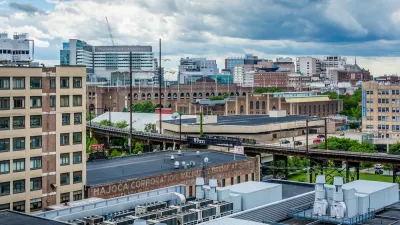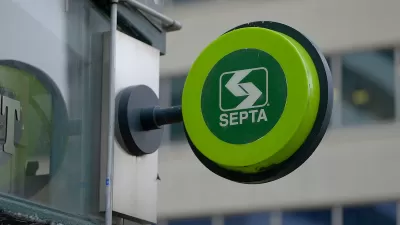Kia Gregory reports on a mural program implemented in the West Philadelphia neighborhood of Mantua over the last year, that has transformed the area into a work of art.
While many of the problems (drug dealing, violence) that afflict the neighborhood have not gone away entirely, the recent mural project, which ended in January of this year, has brought hope, new residents, and the rumblings of redevelopment to the area.
Led by the Mural Arts Program, the largest public art program in the United States, the project in Mantua featured the brightly colored painting of houses in the neighborhood, the clean-up of trash-covered lots, and the conversion of a former drug house into an "art house".
During the project, "Dozens of youths worked alongside the artists and were linked to social services, with some moving from shelters into permanent housing. The art house also served as an information hub for housing, legal aid, health care, and employment," writes Gregory.
The project galvanized the local neighborhood, changing its image both to outsiders and to itself. "Such efforts create 'a subtle shift,' said Jane Golden, executive director of the Mural Arts Program, 'as people start really seeing their neighborhood not as a forgotten place. They talk about it in terms of its potential.'"
FULL STORY: Mural program brings a tinge of hope to Mantua

Manufactured Crisis: Losing the Nation’s Largest Source of Unsubsidized Affordable Housing
Manufactured housing communities have long been an affordable housing option for millions of people living in the U.S., but that affordability is disappearing rapidly. How did we get here?

Americans May Be Stuck — But Why?
Americans are moving a lot less than they once did, and that is a problem. While Yoni Applebaum, in his highly-publicized article Stuck, gets the reasons badly wrong, it's still important to ask: why are we moving so much less than before?

Using Old Oil and Gas Wells for Green Energy Storage
Penn State researchers have found that repurposing abandoned oil and gas wells for geothermal-assisted compressed-air energy storage can boost efficiency, reduce environmental risks, and support clean energy and job transitions.

Poorest NYC Neighborhoods Pay Price for Delivery Boom
The rise of ‘last-mile’ e-commerce warehouses — and their attendant truck traffic and air pollution — is disproportionately impacting the most historically disadvantaged parts of the city.

Greening Oakland’s School Grounds
With help from community partners like the Trust for Public Land, Oakland Unified School District is turning barren, asphalt-covered schoolyards into vibrant, green spaces that support outdoor learning, play, and student well-being.

California Governor Suspends CEQA Reviews for Utilities in Fire Areas
Utility restoration efforts in areas affected by the January wildfires in Los Angeles will be exempt from environmental regulations to speed up the rebuilding of essential infrastructure.
Urban Design for Planners 1: Software Tools
This six-course series explores essential urban design concepts using open source software and equips planners with the tools they need to participate fully in the urban design process.
Planning for Universal Design
Learn the tools for implementing Universal Design in planning regulations.
Heyer Gruel & Associates PA
City of Moreno Valley
Institute for Housing and Urban Development Studies (IHS)
City of Grandview
Harvard GSD Executive Education
Salt Lake City
NYU Wagner Graduate School of Public Service
City of Cambridge, Maryland





























